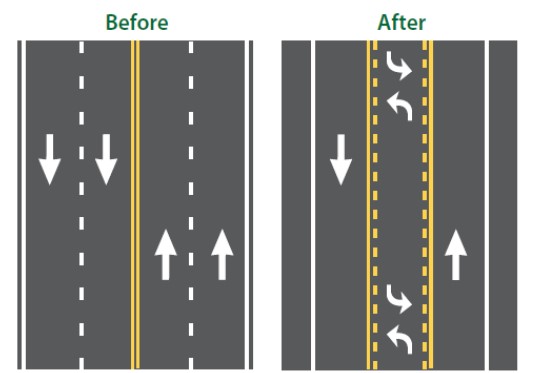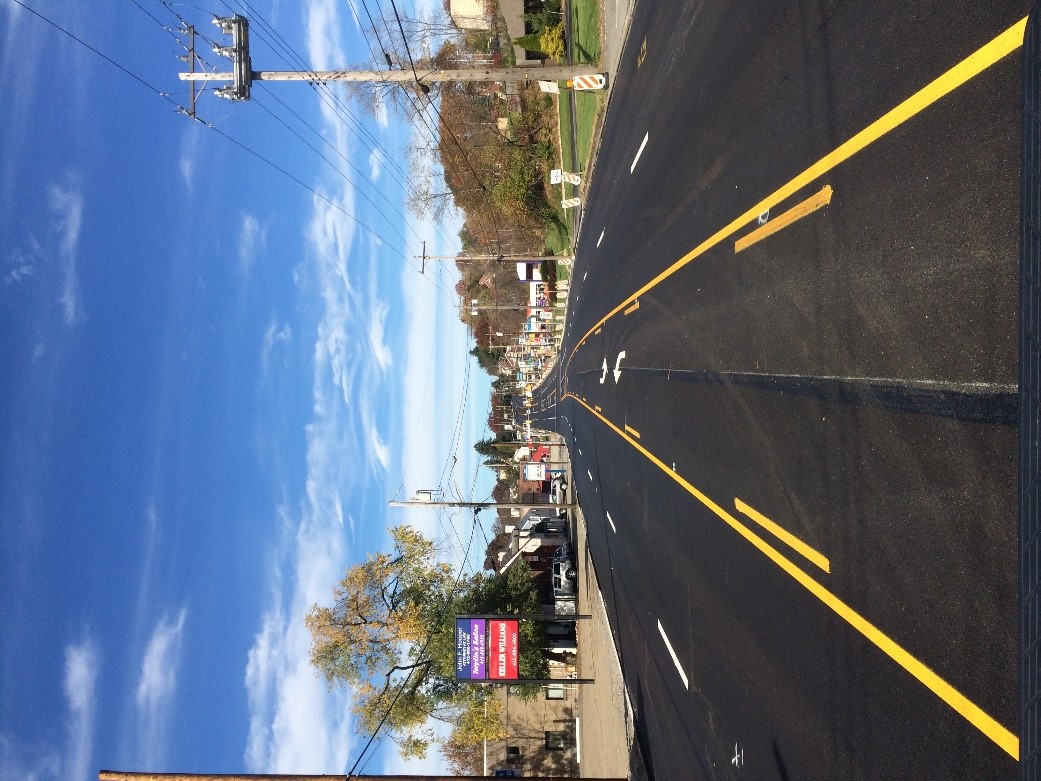Road Diets
As Pennsylvania strives to enhance roadway safety for all users, PennDOT is turning to Road Diets to “right-size” travel lanes and better accommodate motorists, bicyclists and pedestrians. This innovation is proven to increase roadway efficiency and safety. Road Diets is a
Federal Highway Administration (FHWA) Every Day Counts Round 3 (EDC-3) innovation that Pennsylvania championed.

How Does It Work?
The most common Road Diet converts an existing four-lane, undivided roadway to two through lanes and a center, two-way left turn lane. This design allows drivers to exit traffic while waiting for a gap to complete their left turn. This roadway configuration can also provide space for additional safety features, including:
- Pedestrian refuge islands
- Crosswalk visibility enhancements
- On-street parking
- Widened sidewalks and landscaped buffers
- Bicycle lanes and/or transit lanes
What Are The Benefits?
Road Diets increase safety by reducing the crossing distance and exposure for drivers turning left, and they can reduce vehicle speeds. Road Diets also reduce the number of lanes pedestrians cross and can create space to add new pedestrian facilities. These can be a relatively low-cost safety solution, particularly where only pavement marking modifications are required to implement the reconfigured roadway design. When planning Road Diets in conjunction with reconstruction or overlay projects, the change in design may be completed without any additional cost.
DID YOU KNOW...
Studies by FHWA and independent researchers indicate a 19-47 percent reduction in total crashes after the installation of a Road Diet.
Innovation in Motion
The City of Harrisburg, located in Dauphin County, deployed a Road Diet on Front Street, a main north-south artery through the city. The project included reducing travel lanes from three to two, and adding crosswalks, a bike lane and other enhancements. The project resulted in improved bicyclist and pedestrian accommodations, reduced average vehicle speeds from 40 to 35 mph, and enhanced safety and driver comfort without compromising traffic flow.

More Information
For more infomration about this innnovation, contact the
STIC Management Team.